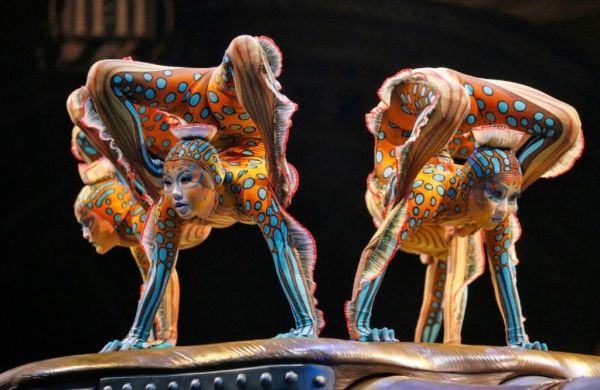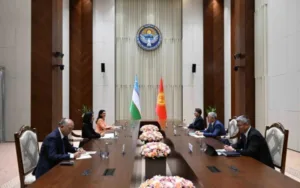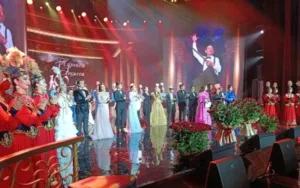
Photo: Photo from the website dallasnews.com
Almost fifty countries have already imposed total or partial bans on the use of animals in circuses. Concern for the welfare of animals, the safety of artists, and the understanding that a modern circus can surprise even wild animals are the main reasons for such decisions.
The traditional animal format still dominates in Central Asia, but the first changes are also appearing here.
In Europe, South America and a number of Asian countries began to abandon the exploitation of animals in circuses. After all, wild animals in the arena cannot live the same way as in their natural environment. Cages, relocations and movement restrictions affect their physical and psychological condition, and training, as a rule, takes place against the will of the animals.
Incidents of animal attacks and accidents at performances have also reinforced the arguments in favor of the ban.
Instead, circuses develop acrobatics, clowning, juggling, and aerial gymnastics. Performances are transformed into theatrical shows and multimedia productions, proving that a circus without animals can be no less spectacular.
One of the most striking examples is the famous Canadian Cirque du Soleil. Their shows combine world-class acrobatics, sophisticated choreography, original music and mesmerizing scenery, completely avoiding animals.
Today it is the largest and one of the most successful circuses in the world, where magic is created by the efforts of people, and not at the expense of animals.
"I do not intend to give up animals"
Tajikistan has the only state–owned central bank in Dushanbe. Animals are still actively used in performances here. According to the director of the circus, Bakhtiyor Rakhmatullozoda, there are currently 29 four-legged performers on staff.
"They are mostly pets: four horses, five dogs, fourteen ducks, two donkeys and one goat. Exotic animals include monkeys, camels, pythons and the Central Asian brown bear," he said in an interview with Asia-Plus.
The director stated that he does not support the idea of abandoning animals. According to him, they are full-fledged artists, and many people, especially children, come especially for them.
"I can't imagine circus performances without animals. They can perform incredible tricks, which creates an atmosphere of magic and causes surprise and admiration," Rahmatullozoda believes. – And the natural instincts and behavior of animals add strangeness and brightness to the show. Animal circuses have a long history, and many generations have grown up enjoying these performances. It's an emotional connection between man and nature."
According to him, acrobats, jugglers, clowns, illusionists, aerial gymnasts and balancing acts, as well as performances with elements of Tajik folk culture, complement the animal performances.
Sometimes touring circuses from other countries come to Dushanbe, whose animals are previously quarantined for 20 days at the border.
The animals in the capital's circus are kept at the expense of state funding, as well as 10% of the proceeds from performances.
The conditions of detention, according to the director, are adapted to the season: there is heating in the cages, boards and hay are laid in winter, and in summer the animals spend more time outdoors. The bear stays in a special outdoor enclosure during the day, the dogs walk daily, and the horses are cleaned and washed.
The circus employs a full-time veterinarian who conducts examinations, vaccinations, treats and advises care workers, Rakhmatullozoda said.
"As an honored artist, I want circus programs featuring trained animals to be performed in all circuses around the world. I support this," he concluded.
A time of evolution, not cruelty
Eco- and zoo activist, environmentalist Natalia Idrisova is confident that the rejection of animals in circuses is not only a matter of ethics, but also the image of the country.
"This issue is actually very important and clearly indicates the backwardness of Tajikistan in the adoption of new laws, the transition to a new model of behavior and perception of society, as well as the formation of a good image of the country," she says.
In her opinion, the circus is not only entertainment and emotions. It is an independent art form where artists develop their talents and attract the attention of the public.
In addition, circuses perform an important educational function, because most of the audience are children. Therefore, it is extremely important to put a correct and humane message in the image of the circus and its activities.
The exploitation of animals in circuses is a merciless story of bullying, forced coercion, mental breakdown of wild animals and detention in terrible conditions, the expert emphasizes.
"Animals in circuses are a resource with a short life span, and modern society increasingly refuses to "have fun" at the cost of suffering other living beings. It is necessary to instill this in our children. This is a future without cruelty, selfishness, where caring for others is an important aspect," she says.
How can a Tajik circus earn money in a new way?
According to Idrisova, a new emphasis should be placed on the talent and charisma of clowns, tightrope walkers, acrobats and magicians, developing circus art, rather than making money at the expense of animals.
"Marketing and communication with viewers means a lot now. Our circus should reconsider its approach, conduct social networks, and get closer to the audience. This will give the artists new earning opportunities. For example, through events for children and families, children's camps, training, performances abroad and participation in competitions," she advises.
The level of cruelty and violence against animals in Tajikistan is very high, Natalia states, and this needs to be comprehensively and urgently changed.
"We must evolve, not degrade. There should be no total indifference in this matter, because it directly concerns the upbringing and moral image of the whole country," she concludes.




